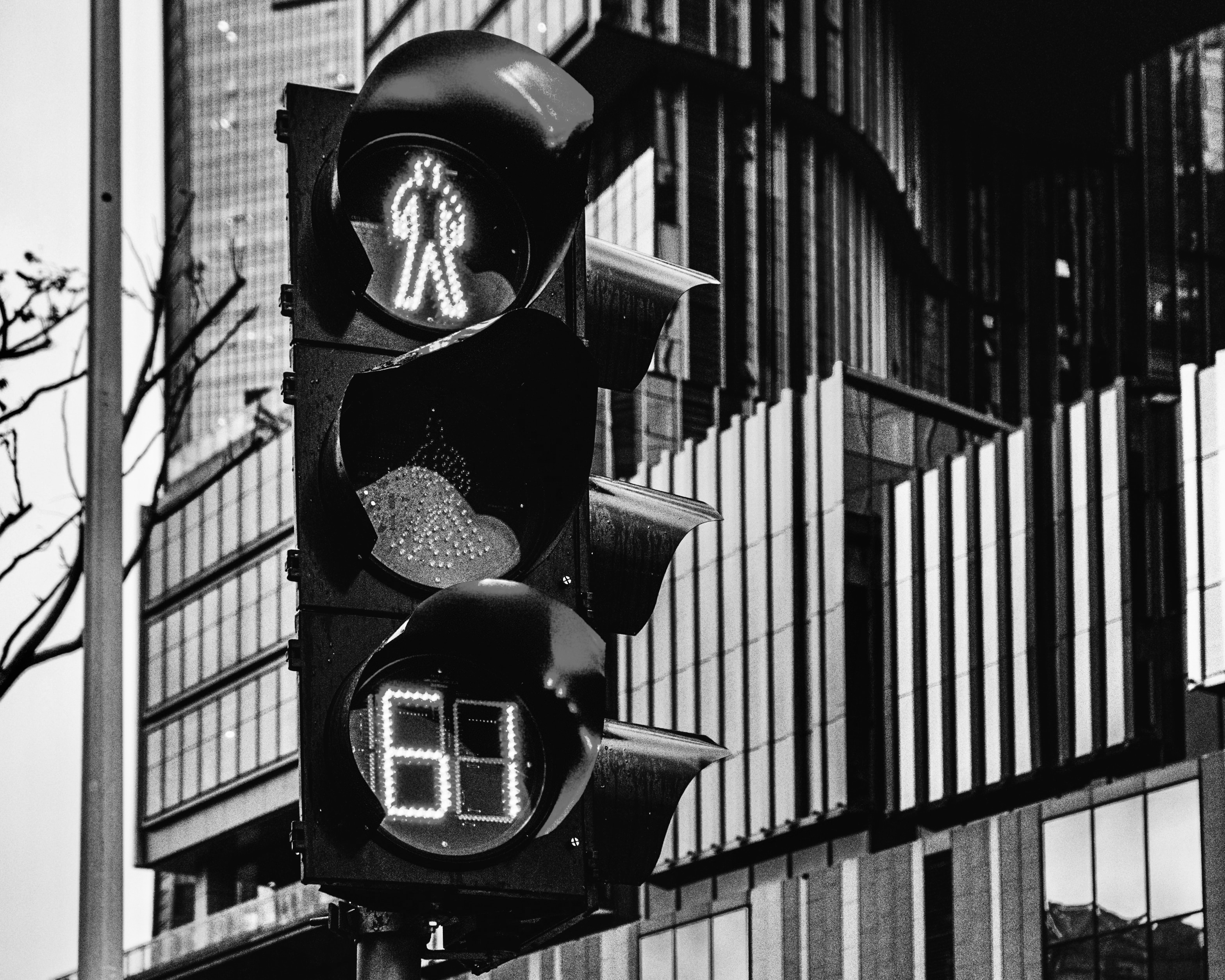
Reimagining The Traffic Light
By Khaled Abou Alfa • 8th of May, 2022
In August 1914, the city of Cleveland was about to introduce a new piece of technology on the corner of E.105th Street and Euclid Avenue. A technology that would proliferate and become one of the most ubiquitous street furnishing in any modern city, the electric traffic light. Designed by James Hoge, it eventually comprised of four pairs of circular lights, located around a booth which were wired to a control panel inside that allowed the traffic police to control manually.
Aside: The original patent application (filed in 1913 and approved in 1918) showed a slightly different design topology with four separate poles on a crossroad with the the word ‘move’ and ‘stop’ rather than the circular lights used in the final executed pole, although the words move and stop were used.
This new traffic paradigm resulted in a number of experimental topologies and designs. A little later New York City would introduce the intermediate amber light. In 1931 the world agreed to the conventions for traffic symbology. There was a tweak to this with the introduction of pictograms rather than text (to maintain a form of inclusivity for those unable to read a particular language). These lights would act as the playground for countries and cities to distinguish themselves. By far my favourite of these interpretations is Ampelmann in Berlin - so much so it’s the only souvenir I have on my desk of all the countries that I have been to.
Across 100 years the overall design of traffic light has not changed in any meaningful way. To say that this technology has remained mostly stagnant is an understatement. The large companies that control this space have ‘innovated’ with the introduction of LED lights and thinner profiles. Maybe this is a function of limited municipal budgets and lack of imagination that prohibited the development (and deployment) of more useful and thoughtful interactive traffic signage. As discussed in issue 40, it wouldn’t be until 1983, for the introduction of traffic lights for the blind. This is a very slow field of urban design.
Russian design firm Art Lebedev (who also have (had) an office in Ukraine) have reinterpreted the traffic light into a possible contemporary solution. None of the ideas presented are outside the capacity of existing LED technology. This is not Hyperloop territory. While there is an argument to be made that the proliferation of the traffic light is not an overall urban design win, the reality is that this solution remains a necessary one (until self driving cars take over). Its been over 100 years, we can do better.